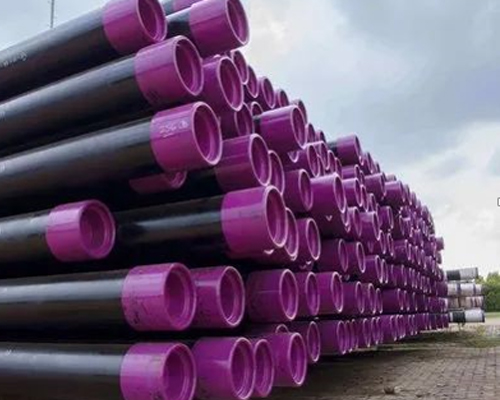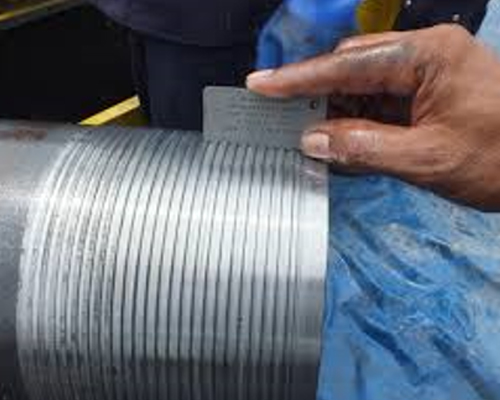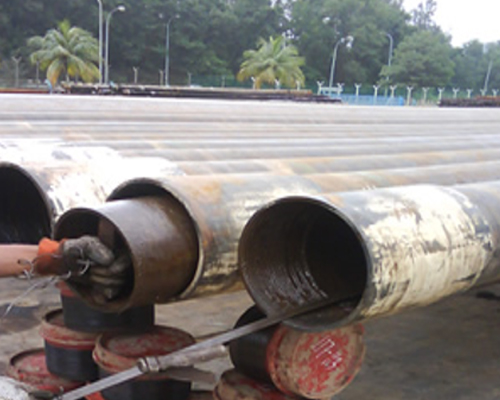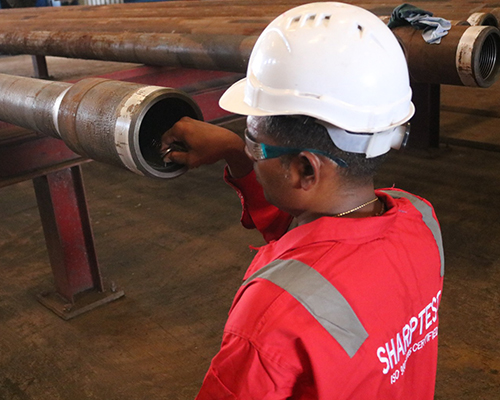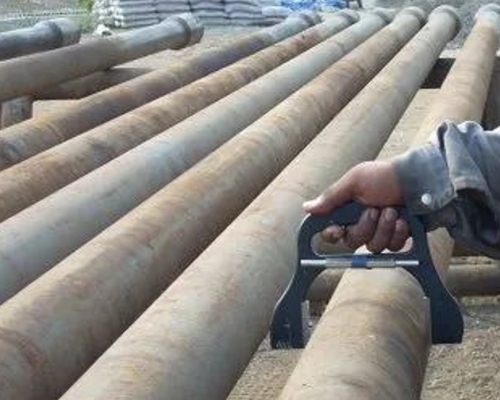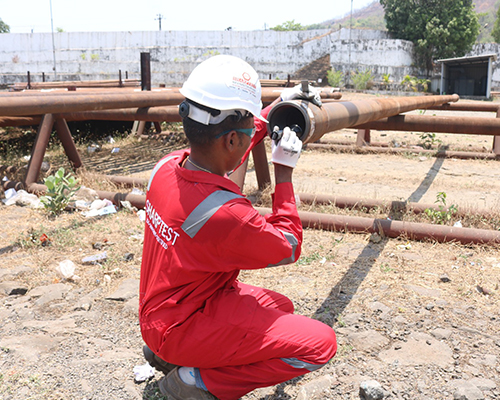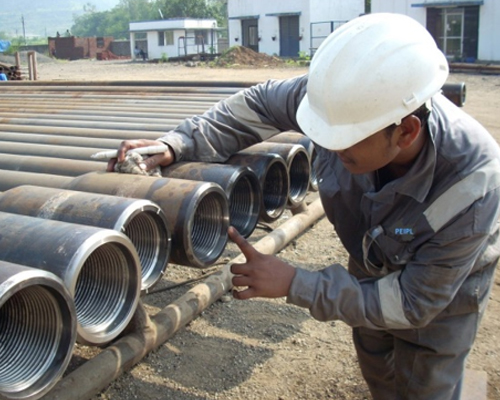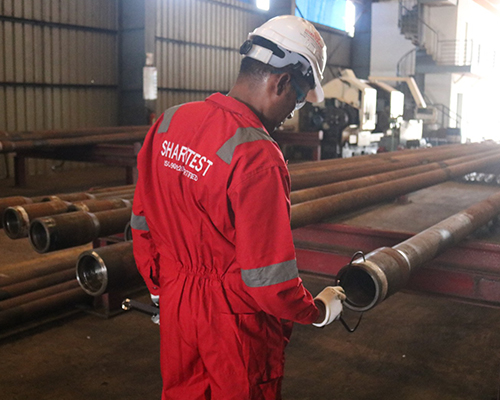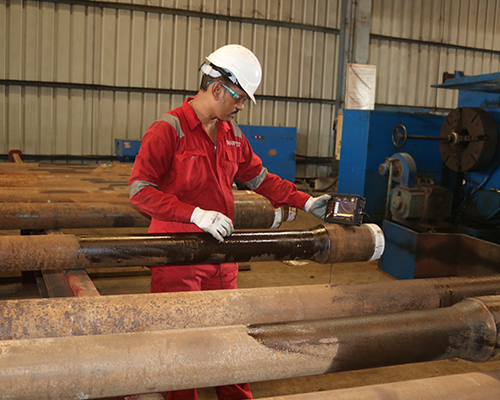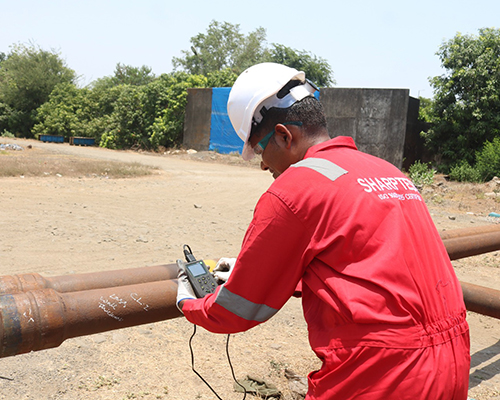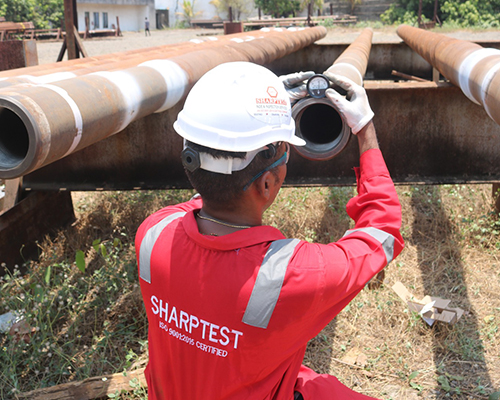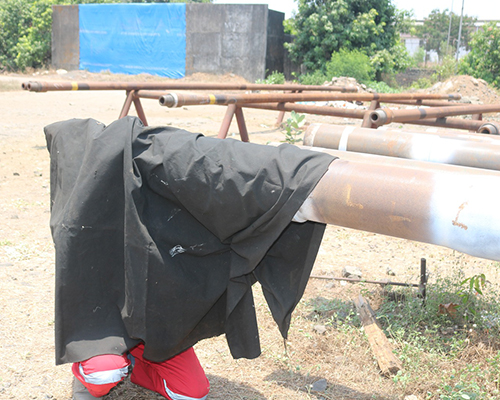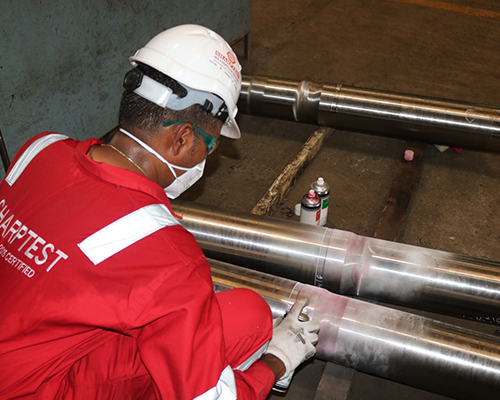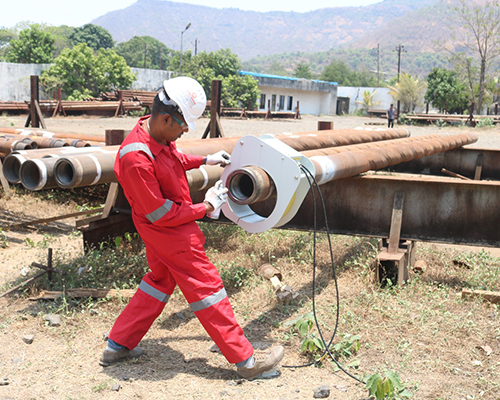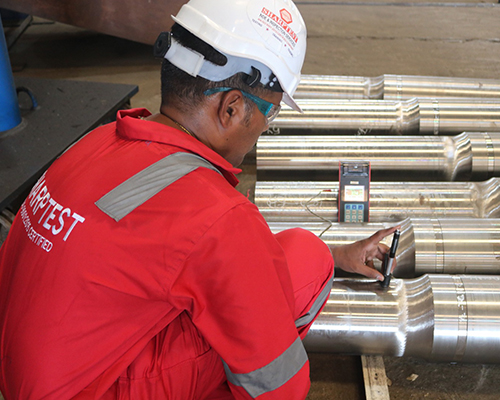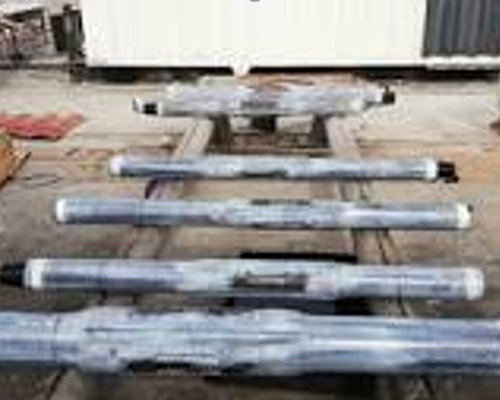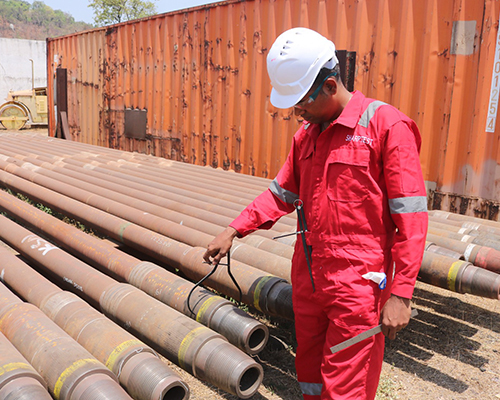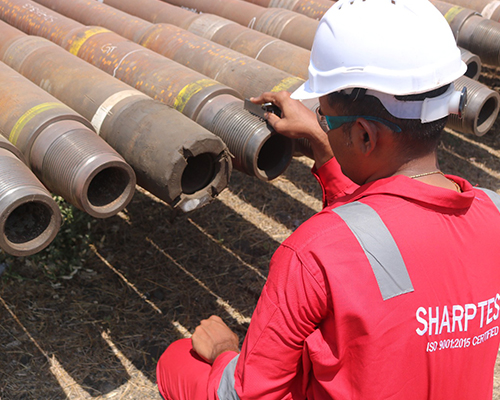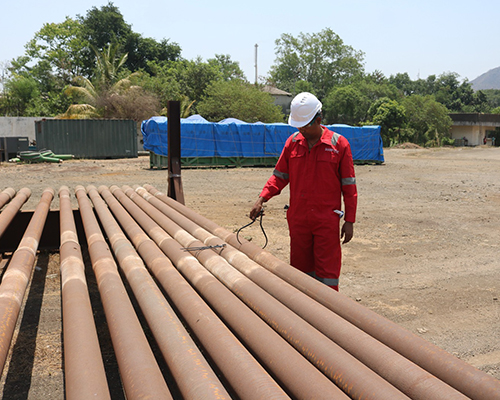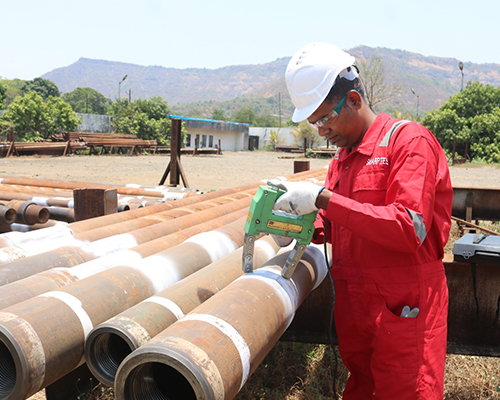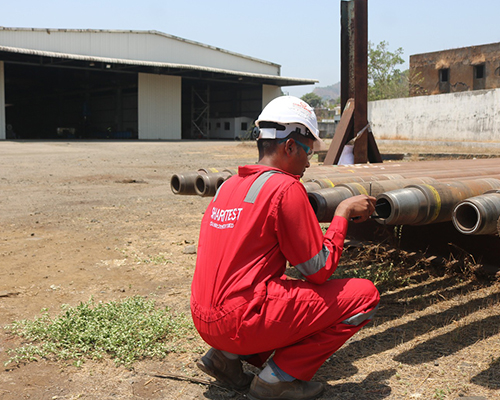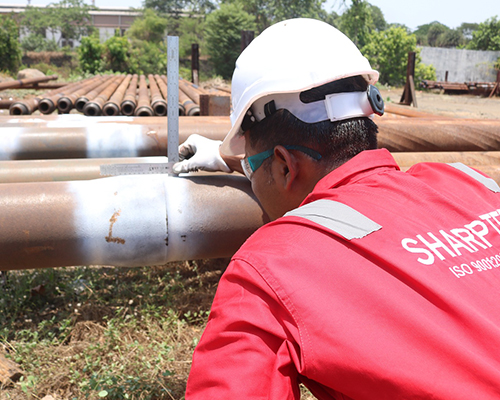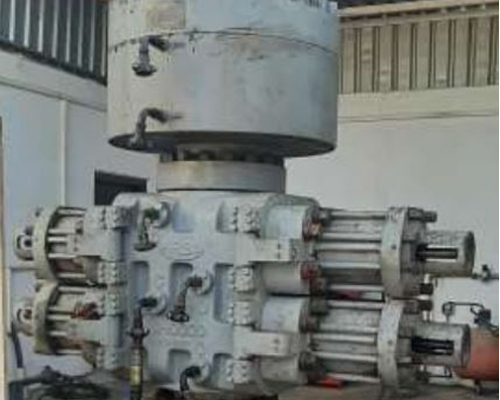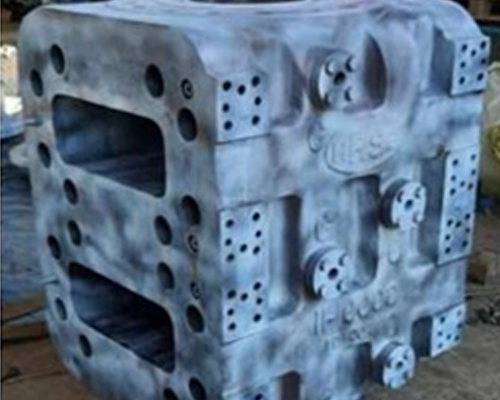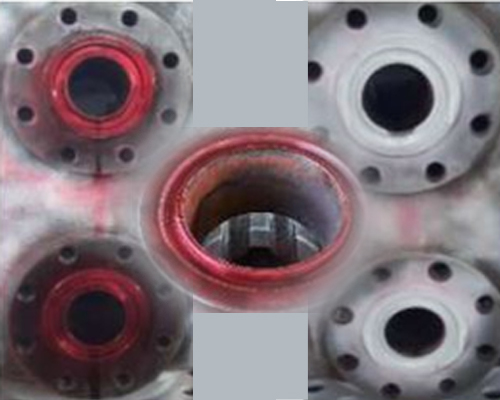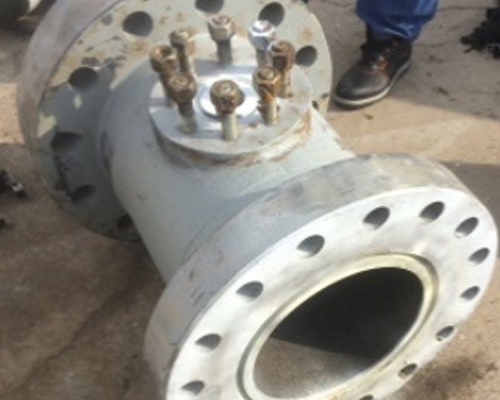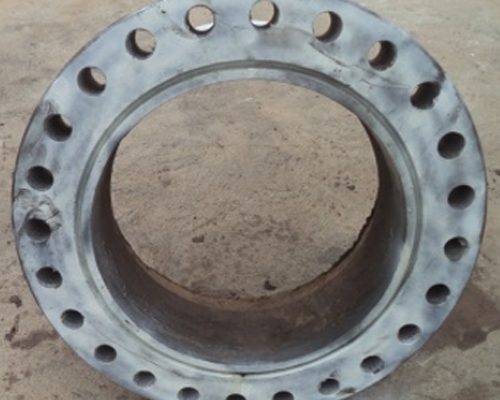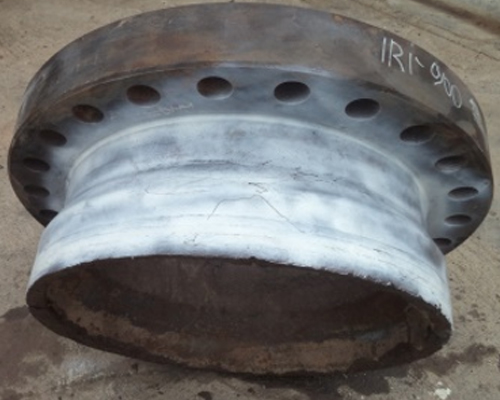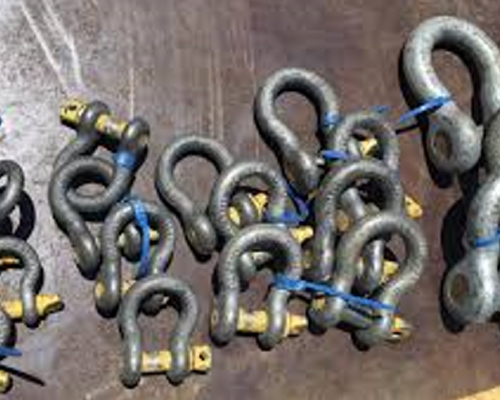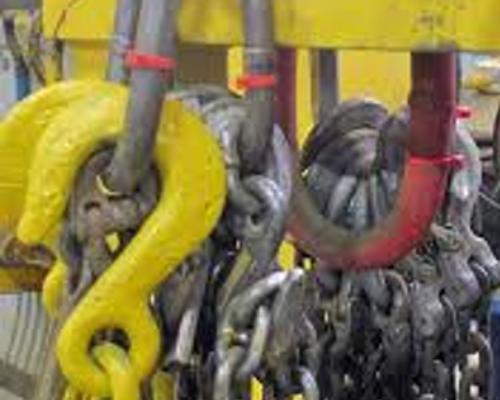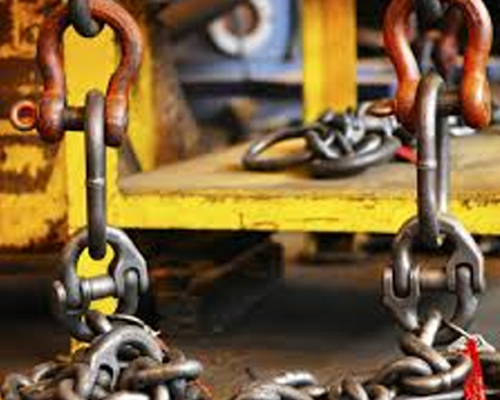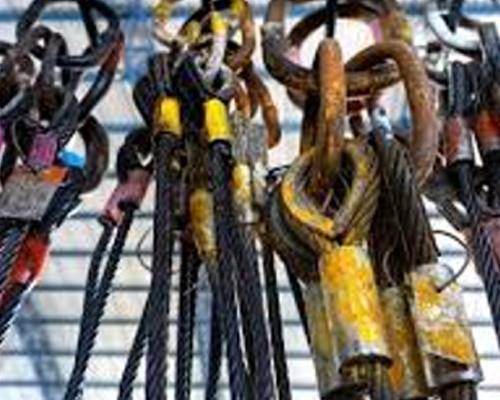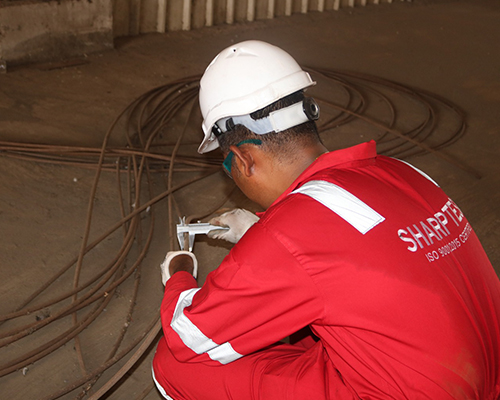OCTG Services (Upstream)
Casing and tubing inspection is an important part of the oil and gas industry, and it involves the evaluation of the quality and integrity of the steel pipes used in drilling and production operations. The inspection process is designed to ensure that the pipes are fit for purpose and can withstand the harsh environments and high pressures encountered during drilling and production.
Sharptest that specialize in casing and tubing inspection services typically have a team of trained professionals with extensive experience in the oil and gas industry. The results of the casing and tubing inspection are used to determine the suitability of the pipes for their intended use and to identify any potential issues that may need to be addressed before the pipes are put into service. This helps to ensure that the drilling and production operations are safe, efficient, and reliable.
Drill pipe inspection is a crucial process in the oil and gas industry that involves assessing the condition of the drill pipes used in drilling operations.
Purpose: The primary purpose of drill pipe inspection is to ensure that the drill pipes used in drilling operations are safe and reliable. Inspection helps to identify any defects or damage that could compromise the integrity of the pipes and cause accidents or operational downtime Methods: There are different methods of drill pipe inspection, including visual inspection, magnetic particle inspection, ultrasonic inspection, and electromagnetic inspection. Each method has its advantages and limitations, and the choice of method depends on factors such as the type of pipe, the operating conditions, and the inspection objectives.
Standards: Drill pipe inspection is governed by industry standards such as API RP 7G-2, DS-1, and NS-2. These standards provide guidelines on the inspection procedures, equipment, and acceptance criteria for drill pipes.
Frequency: Drill pipe inspection should be performed regularly at specified intervals, such as after a certain number of drilling hours or after a certain number of drilling operations. The frequency of inspection depends on factors such as the type of pipe, the operating conditions, and the inspection objectives.
Reporting: After inspection, a detailed report is generated that summarizes the inspection findings, including any defects or damage found, the severity of the defects, and recommendations for repair or replacement. The report helps to inform decision-making regarding the use, repair, or replacement of the drill pipes.
Benefits: Drill pipe inspection helps to prevent accidents, reduce downtime, and prolong the lifespan of drill pipes. It also ensures compliance with industry standards and regulations, enhances operational efficiency, and promotes cost-effectiveness.
BHA (Bottom Hole Assembly) inspection is a critical process in the oil and gas industry that involves examining the various components of the drilling assembly that are located at the bottom of the drill string, include drill bits, subs, collars, jars, and other components. During BHA inspection, the components of the assembly are thoroughly examined for signs of damage, wear, and other issues that may compromise the integrity of the assembly or cause drilling problems.
Overall, BHA inspection is an essential component of the oil and gas industry, and it plays a critical role in ensuring the safety, reliability, and efficiency of drilling operations. SLJV specialize in BHA inspection services typically have a team of trained professionals with extensive experience in the oil and gas industry and use state-of-the-art equipment and techniques to ensure that the BHA is operating effectively and efficiently.
BOP (Blowout Preventer) inspection is an important part of oil and gas drilling operations. It is essential to note that BOP inspection procedures may vary depending on the type of BOP, manufacturer's recommendations, and regulatory requirements. Therefore, it is recommended to consult the relevant guidelines and standards before conducting a BOP inspection. By following proper API / NDT inspection and maintenance procedures, the BOP stack's reliability and effectiveness can be maximized, reducing the risk of blowouts and other catastrophic events during drilling operations. BOP certification requires – Comply With Industry Standards, Inspection planning, Pre-inspection preparation, Visual Inspection, API Inspection, Pressure Testing, Functional Testing, Record & Reports, Repair and maintenance, Re-commissioning .
Third-party Quality Assurance/Quality Control (QA/QC) services for Oil Country Tubular Goods (OCTG) involve independent inspection and testing of these products to ensure compliance with industry standards and customer requirements. These services are crucial for the safety and reliability of the products used in the oil and gas industry.
Third-party QA/QC service providers typically have a team of experienced inspectors who conduct or witness various types of inspections, including visual, dimensional, and non-destructive testing (NDT), etc..
The main benefits of using third-party QA/QC services for OCTG products include:
- Compliance with industry standards: Third-party inspectors ensure that OCTG products meet industry standards such as DS-1, API or ISO specifications and standards.
- Quality control: Third-party inspectors help to ensure the quality of OCTG products by conducting or witness rigorous inspections and tests that may not be feasible for the customer to perform on their own.
- Increased safety: Third-party inspectors ensure that OCTG products are safe to use by detecting any defects or flaws that could compromise their integrity.
- Reduced risk: By using third-party QA/QC services, customers can reduce the risk of receiving non-compliant or defective OCTG products.
Overall, third-party QA/QC services are an essential component of the OCTG industry. They provide an independent and objective assessment of OCTG products, ensuring that they meet industry standards and customer requirements, which ultimately contributes to the safe and reliable operation of the oil and gas industry.

- Rig Inspection :-
Rig inspection is a critical process in the oil and gas industry to ensure the safe and efficient operation of drilling equipment. The inspection process involves examining the rig components for signs of wear, damage, and defects that could compromise its strength and integrity. During the inspection, the rig is evaluated based on various standards such as those set by the American Petroleum Institute (API) and International Association of Drilling Contractors (IADC). The inspection process is carried out by experienced and certified inspectors who use advanced technology and tools to assess the rig's safety and performance. The inspection process involves a comprehensive assessment of the rig's components, including the mast, crown substructure, drilling equipment, and safety systems. Visual inspection, non-destructive testing, and other techniques are used to identify any damage, wear, or defects that could lead to equipment failure or safety issues. The inspection results are documented and reported to the relevant parties, including rig operators, drilling contractors, and regulatory agencies. The inspection report provides valuable information on the rig's condition and identifies any areas that require maintenance or repairs. Rig inspection helps to prevent equipment failure, minimize downtime, and increase the safety and efficiency of drilling operations. As such, it is an essential service for any company involved in the oil and gas industry.
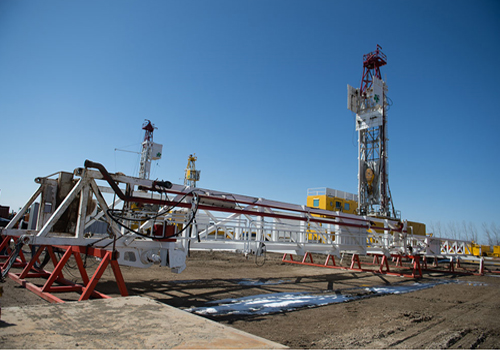
- Lifting Inspection :-
Lifting inspections are critical to ensuring the safety of personnel and equipment during lifting operations. Lifting inspection is a type of inspection that is performed on equipment used for lifting and hoisting operations, such as cranes, hoists, and lifting gears. The purpose of this inspection is to ensure that the equipment is in good working condition and is safe to use. During a lifting inspection, the inspector will typically check for signs of wear and tear, corrosion, and other types of damage that can affect the safety and performance of the equipment. They may also check the load capacity of the equipment and ensure that it meets all relevant safety standards. Lifting inspections are typically carried out by trained and qualified personnel who have a thorough understanding of the equipment being inspected and the safety standards that must be met. Many companies that use lifting equipment on a regular basis, lifting inspections are important for maintaining the safety of workers and preventing accidents and injuries. By identifying and addressing potential issues early on, companies can avoid costly downtime and repairs, and ensure that their lifting equipment is always in good working condition.
- Handeling Equipment Inspection :-
Rig handling equipment NDT inspection is an essential process in ensuring the safety and reliability of equipment used in the oil and gas industry. Non-destructive testing (NDT) methods are used to detect flaws and defects in the equipment without damaging it. API (American Petroleum Institute) standards provide guidelines for the inspection, testing, and maintenance of rig handling equipment. The API recommends that NDT inspections be carried out on a regular basis to detect potential problems before they become serious. Manufacturers also provide guidelines for the inspection of their equipment, which should be followed in conjunction with the API standards. These guidelines typically provide specific instructions on the inspection techniques to be used, the frequency of inspections, and the acceptance criteria for defects.
A drop object survey inspection is a type of assessment used to evaluate the integrity and safety of equipment, structures, or facilities that are subject to potential impacts from falling objects. This inspection typically involves a systematic review of the site to identify potential hazards and areas of concern, followed by a detailed assessment of the impact resistance of the equipment or structure.
During a drop object survey inspection, inspectors will typically evaluate the design and construction of the equipment or structure, as well as the materials used and any protective measures in place. They may also perform tests or simulations to determine how well the equipment or structure can withstand impacts from various types of falling objects.
The results of a drop object survey inspection can be used to identify areas where improvements or modifications are needed to enhance safety and reduce the risk of accidents or damage. This type of inspection is commonly used in industries such as construction, oil and gas, and manufacturing, where falling objects can pose a significant risk to workers and equipment.

